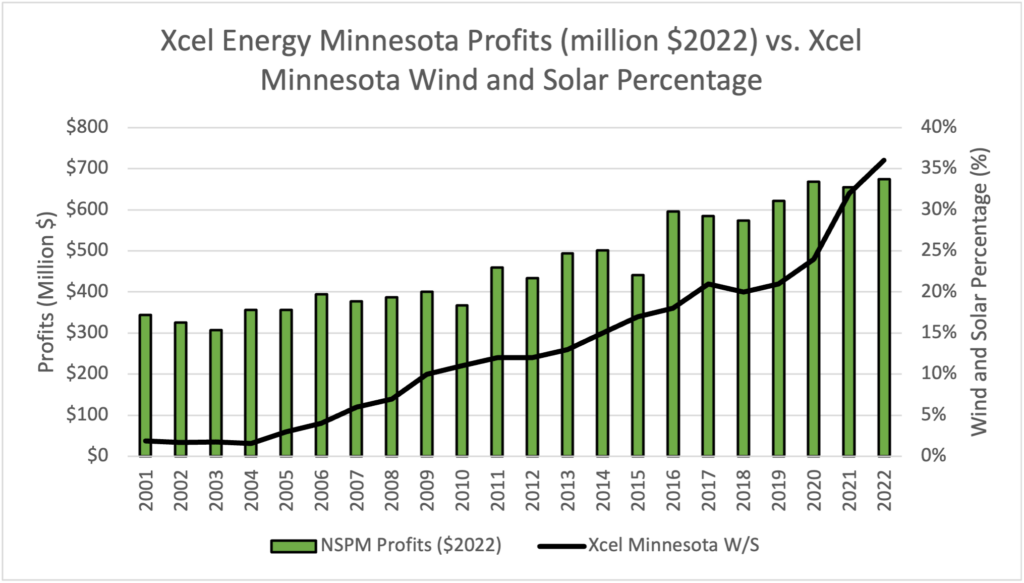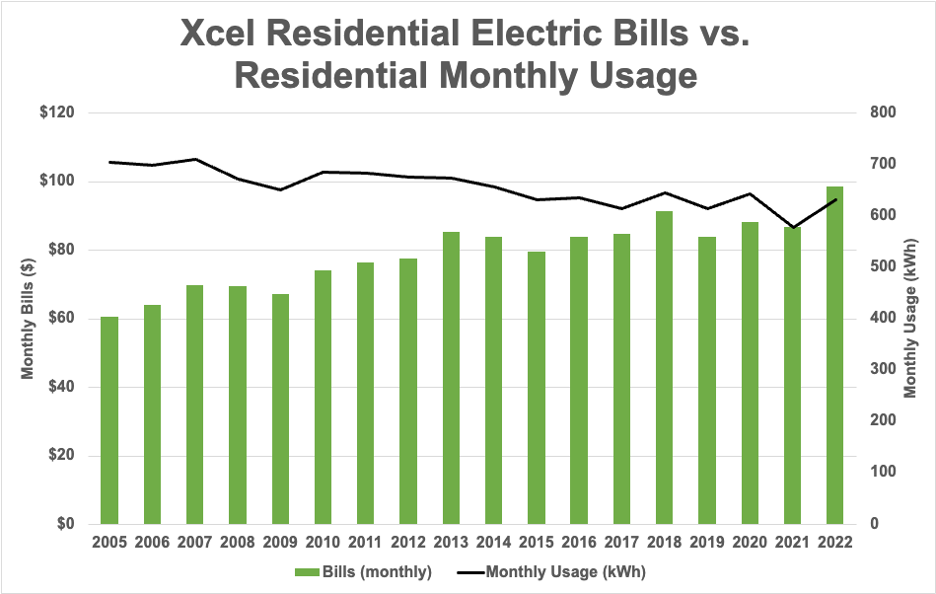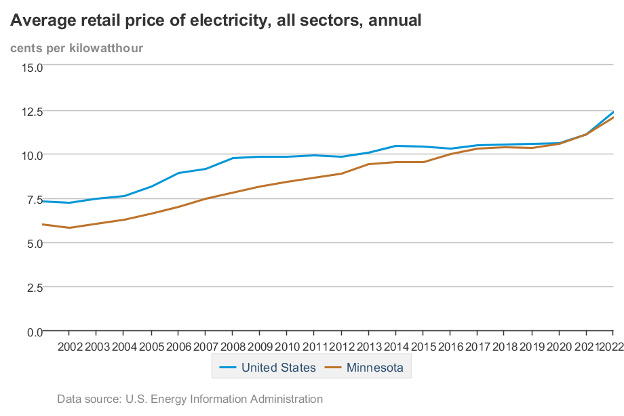Xcel is Cashing In on Renewable Energy Mandates
Xcel Energy has been cashing in on Minnesota’s renewable energy mandates.
Minnesota passed the Renewable Energy Objective (REO) in 2001, requiring utilities to make a “good faith effort” to reach 10 percent renewable by 2015. These good faith efforts turned into direct mandates in 2007 when former Governor Tim Pawlenty (R) signed into law the Next Generation Energy Act (NGEA).
As a result of these mandates, Xcel Energy’s profits in Minnesota have increased dramatically.

As you can see from the graph above, in 2022 dollars, profits for Xcel Energy in Minnesota (also known as the Northern States Power Co-Minnesota or NSPM) have increased by 96 percent, rising alongside the company’s large investments to grow wind and solar generation in the state. There’s a very good explanation for why these are linked.
Xcel is a regulated monopoly, and its prices are determined by the Public Utilities Commission (PUC). In regards to Xcel’s profits, the most important aspect of how the PUC determines electricity prices is that Xcel is only allowed to make a profit when it builds more infrastructure, like buildings, transmission lines, and yes, wind and solar facilities.
The ability to earn profit in this way was originally intended to incentivize the building of necessary infrastructure to serve customers in Xcel’s territory. With renewable energy mandates, however, which require the building of otherwise unnecessary power facilities, it has been used as a money-printing machine for large utilities like Xcel.
Renewable Mandates are Blank Checks for Utilities
Xcel Energy isn’t a private company — not really. It’s a regulated monopoly and the prices it charges customers are determined by the Public Utilities Commission (PUC).
The PUC determines electricity prices with a basic revenue requirement formula shown below, intended to recover the cost of providing electricity plus a profit margin on what the company builds (buildings, power plants, transmission lines, etc.).
Revenue Requirement = Operating Costs + Profit
Profit = Rate Base (undepreciated capital) * Rate of Return
That last part is key, because it means Xcel only earns profit from the capital it spends on building new infrastructure. This leads to a perverse incentive for the company to retire existing power plants, for whatever reason the PUC will approve of and no matter how affordable the retiring plants are because the company is earning no profit from them.
Renewable energy mandates act as a blank check for utility companies because they mandate the building of new, expensive power facilities that the company will earn profit from for decades but wouldn’t be needed without the mandates.
Xcel’s increasing profits have been paid for directly by Xcel customers. As shown below, despite reducing monthly usage by over 10 percent since 2005, monthly electric bills for Xcel residential customers have increased by 63 percent.

Asleep at the Wheel
Without an end to the mandates, there are no effective means of keeping electricity costs down in Minnesota moving forward.
While the PUC routinely approves smaller rate increases than what Xcel prefers, PUC commissioners have been asleep at the wheel as Minnesota electricity rates have lost their competitiveness with the rest of the country.

This is because Xcel has been allowed by the PUC to move the benchmark on affordability in pursuing the energy transition, from keeping prices “well below” the national average in 2010, to below the rate of inflation once Xcel prices surpassed the national average in 2013, and so on.
Minnesota law allows PUC commissioners to put the brakes on Minnesota’s crusade toward its renewable energy targets if costs get out of hand. So far, despite Minnesota residential prices increasing 50 percent faster than the national average, they have done nothing.